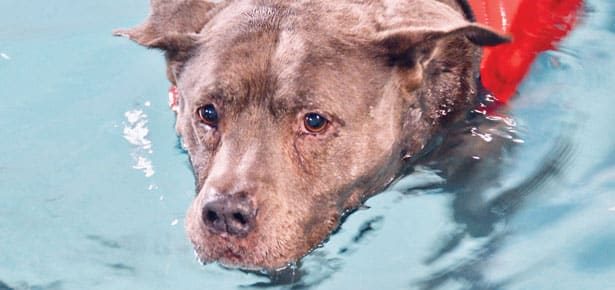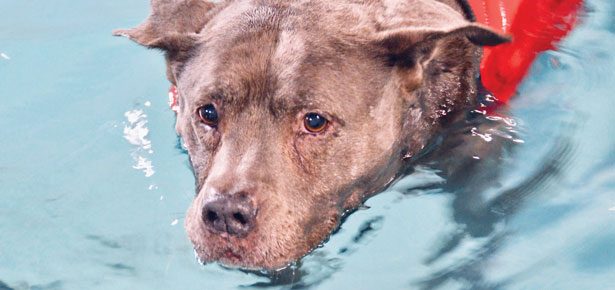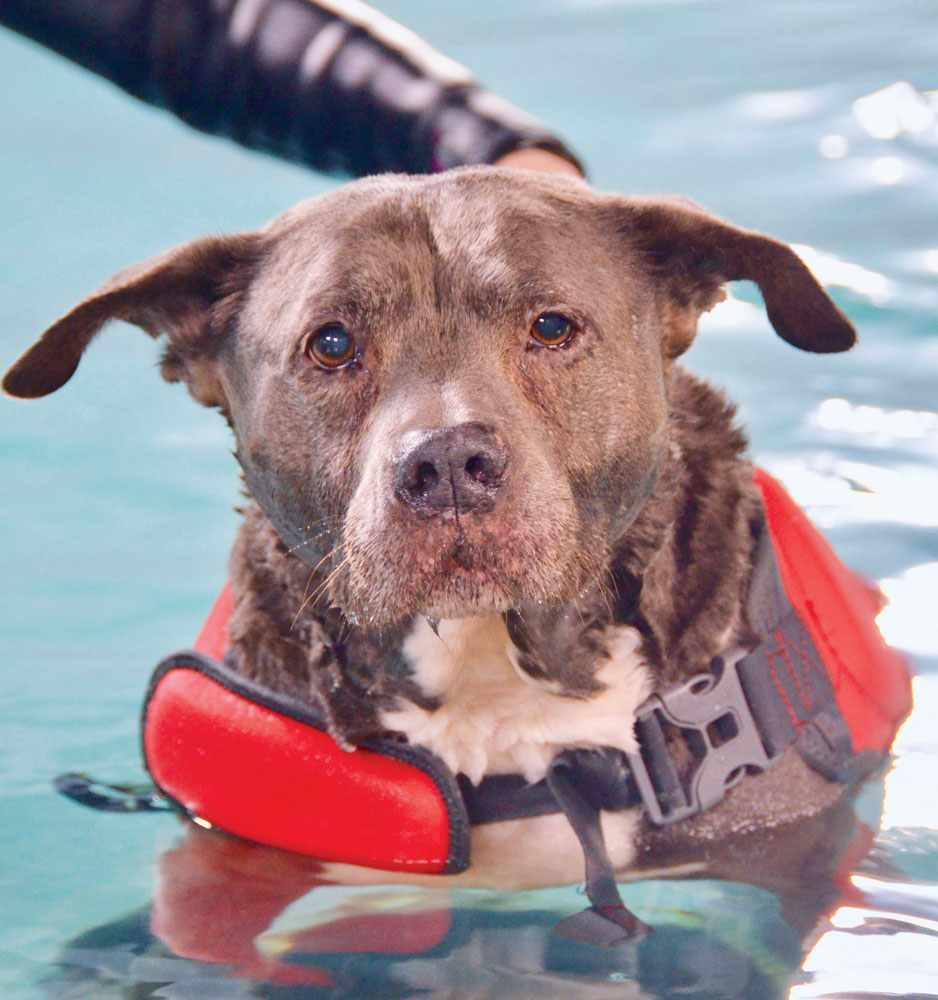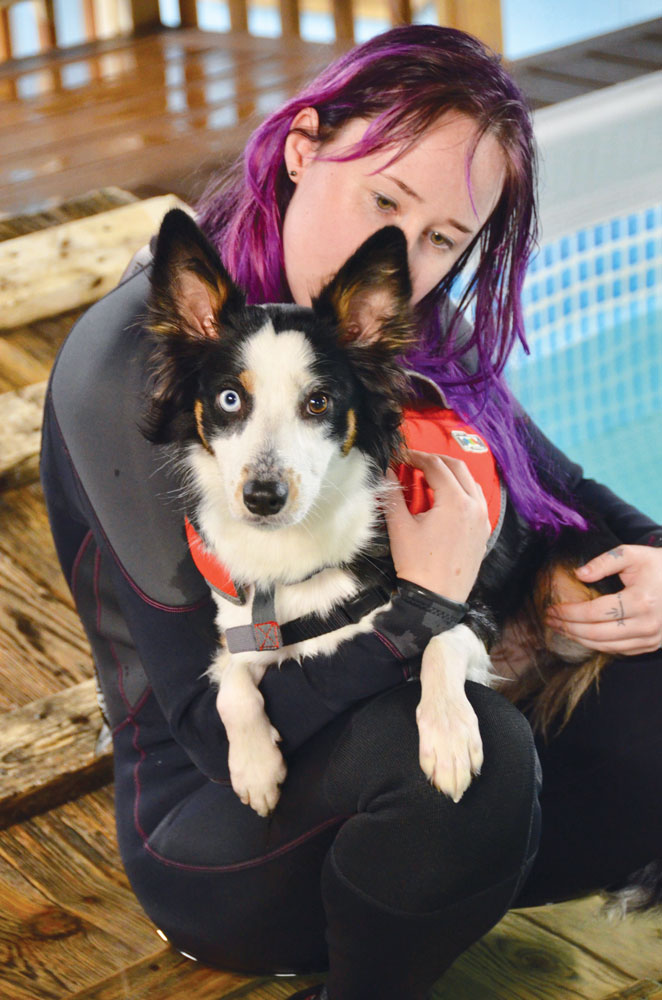

Like a Dog to Water
Hydrotherapy & Swimming Lessons For Dogs
Contrary to popular belief, not all dogs can swim. Yes, breeds like the Golden Retriever, Labrador Retriever, and Portuguese Water Dog, bred to work in the water, are often natural-born swimmers and drawn to water. However, most dogs are not natural swimmers and need to be trained before they are completely comfortable being in the water. Top heavy, brachycephalic, or short-legged breeds, such as Bulldogs, can have particular difficulty staying afloat and may require a swim vest.
What does it take to train your dog how to swim? “Tons of patience, that’s the number one rule. You cannot throw your dog in the water and expect them to just be okay,” says Kya Bam, an instructor and dog trainer at Dog Swim Vancouver.
Charlette the Pit Bull
The key is creating a positive environment for your dog through finding ways to make swimming fun and ensuring they actually want to be in the water, says Bam. Paying attention to your dog’s body language during training sessions is crucial. If they are scared or uncomfortable in any way, it will not be a positive experience and they will become afraid of the water.
“Find their favourite toy and find what motivates them,” suggests Bam, adding, “It is very difficult to teach a dog who is not food motivated or toy motivated because what we want to do is make sure they want to swim. Get in the water with them, make sure they know it is okay, and take your time.”
Border Collie Luna with swim instructor Kya Bam.
Why Teach Your Dog to Swim?
Swimming is a great skill for dogs to have in case of an emergency, as a confidence booster, and as a low-impact form of exercise. Swimming can also help dogs rehab from injury. According to the American Kennel Club, hydrotherapy can be beneficial for dogs with neurological problems, ACL issues, and other orthopedic injuries or conditions, as well as those dealing with post-surgical healing and recovery, desired weight loss, and metabolic conditions like Cushing’s and diabetes that can cause muscle atrophy [source]. It’s also great for senior dogs in general.
“Hydrotherapy is beneficial for older dogs because when they are between the ages of 10 to 15 years old, they start to have a lot of pain in their joints and muscles. It is easier for them to get the exercise they need without having to stand and have gravity pull them down,” explains Bam.
During hydrotherapy sessions, the handler is ensuring the dog is moving their legs and joints properly and creating slight resistance as the dog swims to make sure they are getting the right form of exercise.
“Hydrotherapy is different from just a regular swim because an instructor is making sure the dog is doing a constant swim for 30 to 45 minutes in a safe way,” says Ed Light, owner of Dog Swim Vancouver.
If you are thinking about trying hydrotherapy sessions at home, be patient with your pup and work in a safe, isolated environment to keep them comfortable and focused, he advises.
Join the newsletter and never miss out on dog content again!
"*" indicates required fields
By clicking the arrow, you agree to our web Terms of Use and Privacy & Cookie Policy. Easy unsubscribe links are provided in every email.







